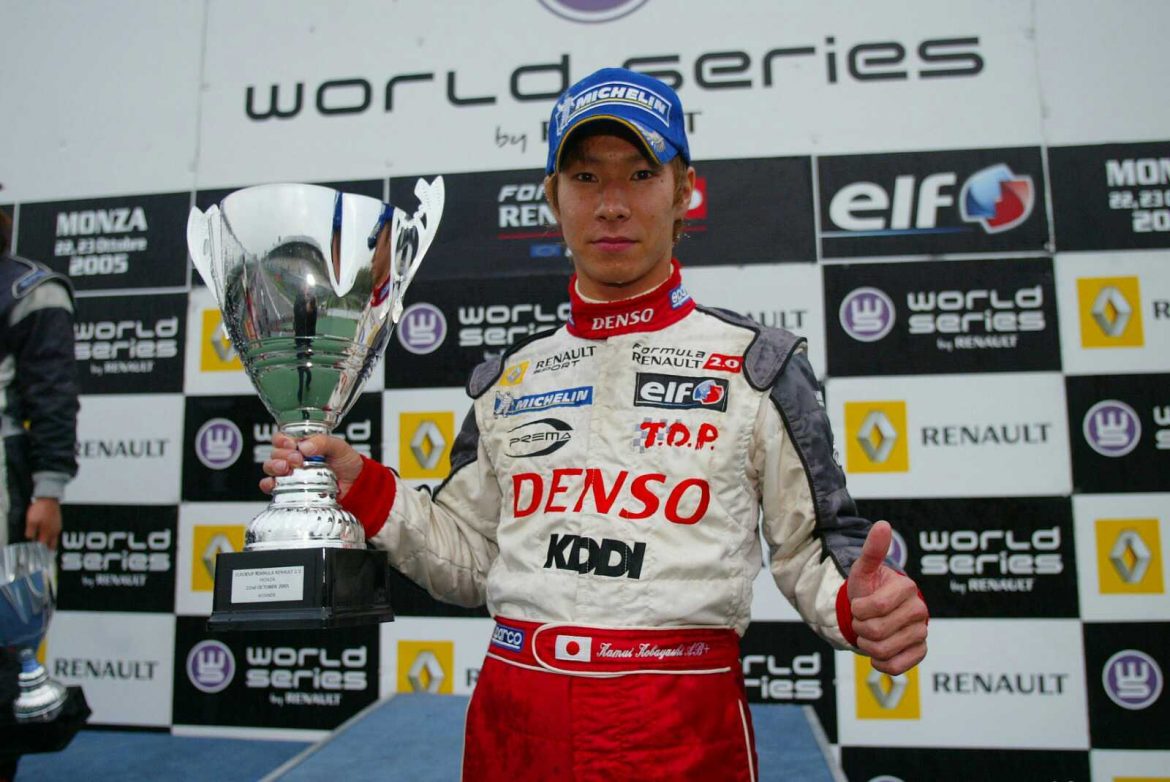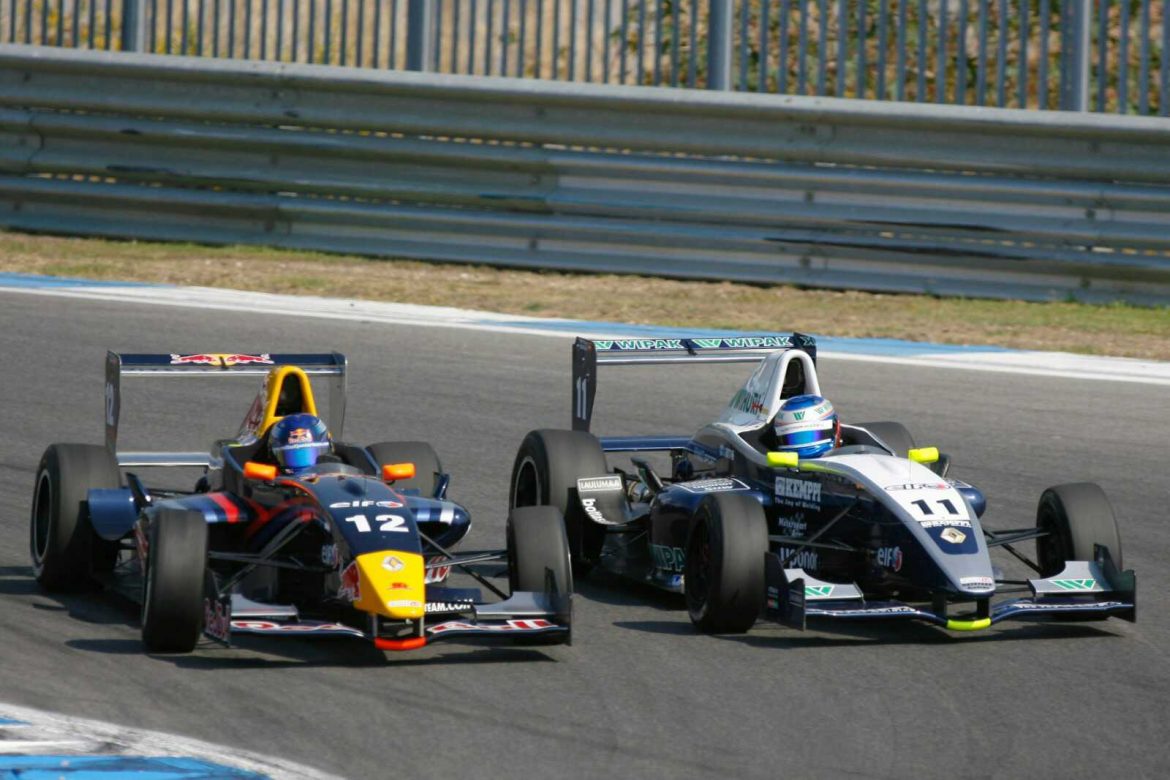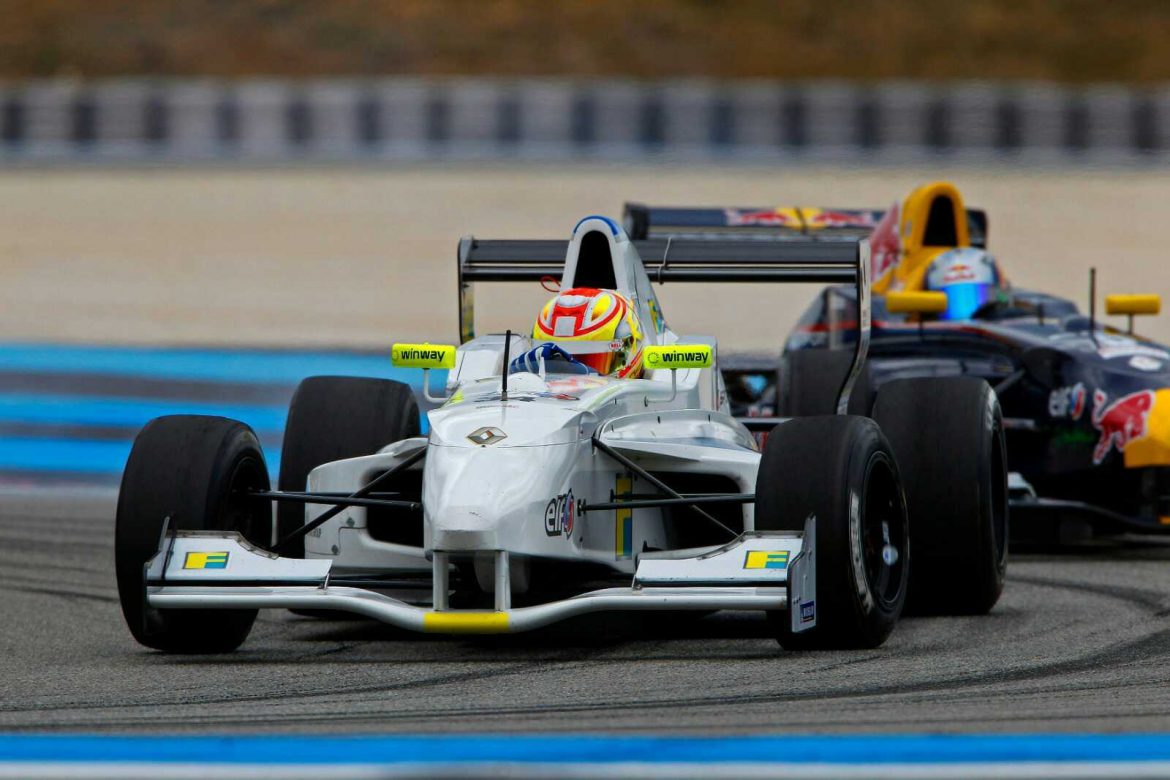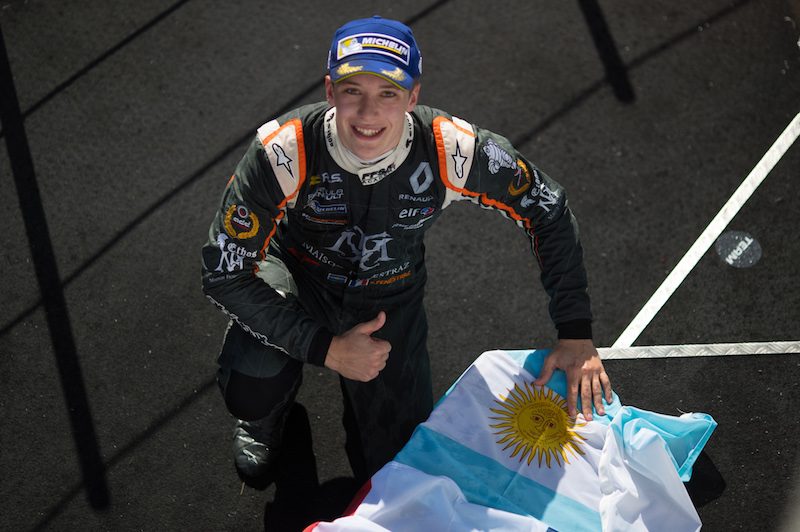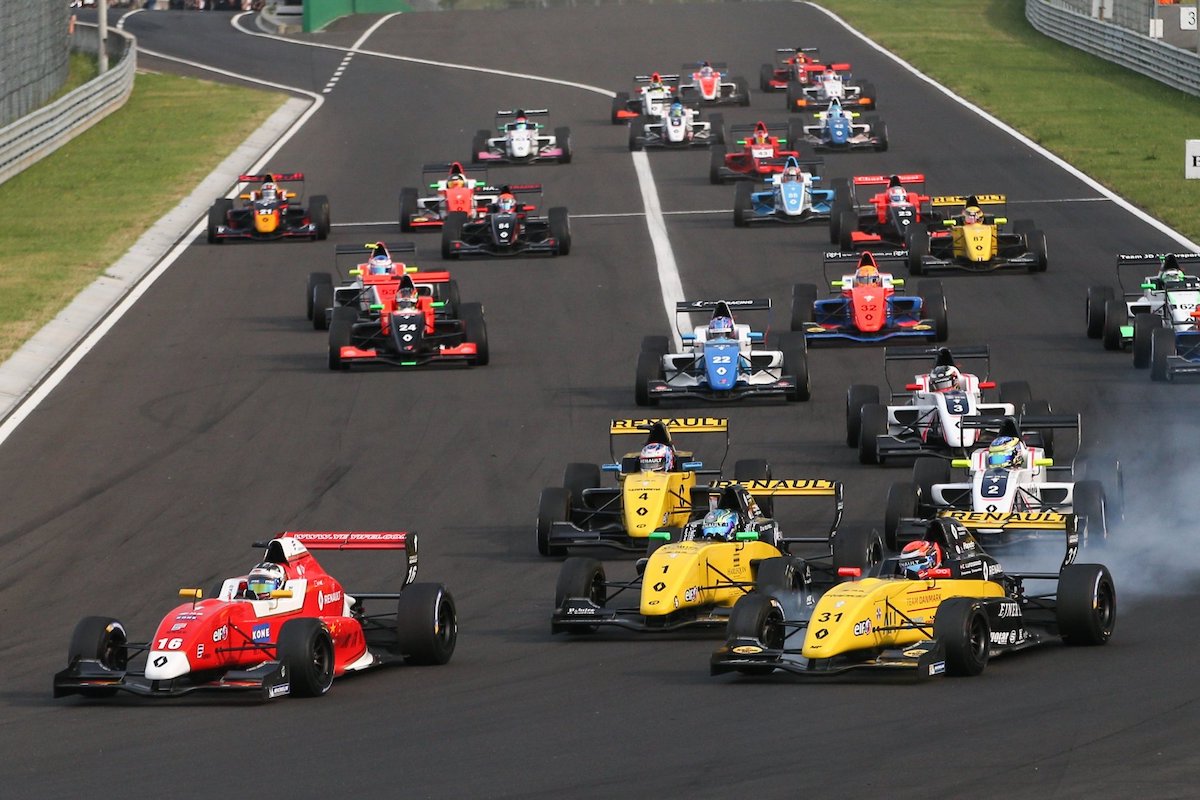
Photos: Renault Sport
With the Formula Renault Eurocup to merge into the Formula Regional European Championship for 2021, Peter Allen looks back at some of the championship’s most classic battles between stars of the future.
This weekend’s Formula Renault Eurocup finale at Paul Ricard marks the end of an era in junior single-seater racing. Over the past three decades, the Eurocup has brought together some of the most exciting talent below Formula 3. It’s allowed future Formula 1 stars to do battle before most fans have even heard their names. Fourteen of the drivers on the current F1 grid have competed in it.
Originally, the Eurocup was a showcase for drivers from all of the different national Formula Renault 2.0 series. But as drivers began to favour competing in continental championships on well-known circuits over the domestic series, the Eurocup would become the main focus and ultimately outlived all of the national competitions.
Formula Scout has picked out 10 of the most memorable Eurocup seasons, chosen for the quality and competitiveness that was on show. While Enrique Bernoldi, Gianmaria Bruni and Felipe Massa were among the earlier Eurocup champions, the list begins in 2005 – when the Eurocup became part of the then-new World Series by Renault package – covering a period when the championship was arguably at its most relevant and most popular.
2005: Kobayashi reels in Ammermuller
In its earlier years, the Red Bull Junior Team was a strong supporter of FR2.0. Scott Speed won the German and Eurocup titles in 2004, and was signed to a Formula 1 seat a little over a year later. In 2005 it looked as though he was going to be succeeded as Eurocup dominator by Michael Ammermuller, who could be considered the forerunner to Sebastian Vettel in Red Bull’s search for a ‘new Schumacher’.
Driving for Jenzer Motorsport, Ammermuller won the first four races of the season at Zolder and Valencia from pole positions. But Red Bull wasn’t the only major junior programme serious about FR2.0. Toyota protege Kamui Kobayashi, racing with Prema Powerteam, had beaten Ammermuller to three wins out of the first four races in their parallel campaigns in the Italian series, and got off the mark in the Eurocup in round three at Le Mans.
However, after a poor weekend on the streets of Bilbao – where Ammermuller took another win plus a second place to rookie team-mate Adrian Zaugg – Kobayashi was 61 points adrift of the championship leader at the halfway stage: equivalent to four race wins.
The pair split the victories at Oschersleben before Kobayashi scored a dominant double at Donington Park, then added another win at Estoril. Ammermuller could still have clinched the title in race two in Portugal, only to suffer his third non-score in as many rounds when he was disqualified from seventh place for not serving a drive-through penalty following a safety car infringement.
Monza hosted the final rounds for both the Eurocup and the Italian championship on the same World Series by Renault weekend. A win in the weekend’s opening race helped Kobayashi towards wrapping up the Italian title, and his previously slim Eurocup chances had already been significantly boosted on Friday when Ammermuller crashed out of first qualifying, consigning him to the back of the grid. Kobayashi went on to win from pole, slashing his deficit from 19 to just two points.
The battle came to a head in a dramatic start to race two. Seeing Kobayashi take the lead from second on the grid, Ammermuller tried a desperate move by cutting the first chicane and driving into his rival. It failed: Kobayashi survived the hit to finish the race in fourth and claim the title, while Ammermuller spun into the pack and retired.
Kobayashi didn’t come close to repeating such title-winning form in the F3 Euro Series or GP2’s main series, but his style earned legions of fans when he did make it to F1. Ammermuller continued to follow in Speed’s footsteps with a move directly to GP2 and tested F1 cars but was eventually let go by Red Bull, before going on to take back-to-back titles in Porsche Supercup.
2008: Bottas and Ricciardo to the wire
Ammermuller may have missed out, but the Eurocup title went to Red Bull juniors again in 2006 and 2007 in the form of Filipe Albuquerque and Brendon Hartley. The pressure was on, then, for new recruit Daniel Ricciardo in 2008 to replicate that after a solid rookie season spent in the Italian championship. He would go up against Valtteri Bottas, who had a similar step up to make up from his first season in cars in the FR Northern European Cup.
Bottas would prove to be the early pacesetter, claiming double pole positions at the opening two rounds at Spa-Francorchamps and Silverstone. But it was Ricciardo that triumphed in the first race ahead of SG Formula team-mate Andrea Caldarelli, with Motopark’s Bottas slipping back to a distant third. The second race was even worse for the Finn, who was penalised for jumping the start.
Bottas bounced back with a dominant race one win at Silverstone, before a now-famous duel in race two when Ricciardo snatched victory on the last lap. But two poles, two wins and two fastest laps for Ricciardo in Hungary, while Bottas failed to score after being excluded from qualifying for an engine illegality, meant the gap between them grew to 38 points in the Australian’s favour.
From there, Bottas produced a marvellous fightback. He took a win at each of the next three rounds and was never off the podium. Ricciardo, on the other hand, was inconsistent, not helped by an engine failure at Le Mans.
As predicted pre-season, it was in fact a four-way title fight. Toyota junior Caldarelli was the opposite of team-mate Ricciardo in terms of consistency: his tally of 10 podiums over the season was joint highest with Bottas, but he never won a race. Still, he ended the Le Mans weekend tied with Ricciardo for the points lead. Bottas was seven points behind, with Roberto Merhi only two further back, moving into contention mid-season with wins at the Nurburgring and Le Mans.
Ricciardo and Bottas took a win each at Estoril, but a 10th place for the former in race two meant it was the latter taking a one-point lead into the deciding Barcelona round. Again, the wins would be shared. That looked unlikely after qualifying, where Ricciardo claimed a double pole and Bottas was only 11th and sixth after an incident with another driver in the rain.
Bottas kept his cool though and worked his way through the order on a drying track to win the first race, while Ricciardo slipped to sixth. Ricciardo won race two and set the fastest lap, but by going from sixth to fourth, Bottas did enough to be champion by three points. Ricciardo did at least claim a consolation prize in the West European Cup title on the same weekend against Merhi and Caldarelli. Bottas, meanwhile, had already dominated his second NEC season ahead of rookie team-mate Antonio Felix da Costa… But his Eurocup scrap with Ricciardo would go down as a classic once both drivers started winning F1 races.
2009: Costa defeats two future Formula E champions
The 2009 season was all about the understudies of the previous season stepping up. Jean-Eric Vergne had been the leading rookie in the Eurocup and WEC in 2008, driving for the same SG Formula team as fellow Red Bull junior Ricciardo. Albert Costa had been close behind him, learning the ropes from fellow Spaniard Merhi at Epsilon Euskadi. And then there was Felix da Costa, who had shown similar form in Eurocup outings alongside his run to second in the FR NEC in the shadow of Bottas at Motopark.
Costa did what Merhi couldn’t and made a flying start to the season. He won the first four races across the Barcelona and Spa rounds – although he did have the first of those taken away from him again for a non-conforming gearbox. Felix da Costa took podium finishes in all four races, and was therefore just one point behind.
Vergne on the other hand had just one podium to his name at that point. This for a driver who, having been signed alongside Ricciardo, only guaranteed his future with Red Bull by taking his maiden Eurocup podium in the last race of 2008. But he rallied superbly in the middle of 2009, with a double win from pole at home circuit Le Mans following victories at the Hungaroring and Silverstone.
As a result, Vergne had moved up to second in the standings with two rounds to go, seven points behind Felix da Costa, who’d only won once (at Silverstone) but been the most consistent. Costa was another seven points adrift after three non-finishes in as many rounds.
Everything turned around again in the penultimate round at the Nurburgring. That weekend, Felix da Costa succeeded Bottas by winning a dominant NEC title over a rookie team-mate – in this case, Kevin Magnussen. But after qualifying on pole in the Eurocup, his and Magnussen’s cars were excluded for technical irregularities. Motopark appealed, and Felix da Costa raced on, beating Costa to the race one win and finishing just behind him in race two, but he would ultimately take no points from the weekend.
Costa on the other hand netted maximum points, moving into the championship lead by two points over Vergne ahead of the decider at the new Motorland Aragon circuit. Seventeen points adrift, da Costa took a double victory that would stand the test of time, but that wasn’t enough. With a second and a third, Costa won the title by 10 points over Vergne and Felix da Costa, who tied for second place. For Costa, who also went on to beat Vergne to the FR WEC title, the success was crucial to him taking the next step in his career – but he wouldn’t get to hit the same heights as his now-illustrious rivals.
2011: Frijns sees off Sainz
The introduction of a new car for 2010, built by Barazi-Epsilon rather than Tatuus, proved unpopular – although the Eurocup still produced an exciting champion in Kevin Korjus. But grid quantity and quality was already much better in 2011, helped somewhat by the closure of Formula BMW Europe which would provide the Eurocup with its top drivers that season.
Without the budget to step up to F3, FBMW Europe champion Robin Frijns moved to FR2.0 along with his Josef Kaufmann Racing team. Red Bull meanwhile brought over Carlos Sainz Jr and Daniil Kvyat after their rookie single-seater seasons, both driving for the Koiranen team that had taken Korjus to the title.
With two years in FR2.0 UK already under his belt, it was Will Stevens that was quickest out of the blocks at Motorland Aragon, winning race two after a fuel pressure problem in the opener had handed Sainz victory. But Stevens wouldn’t win again, allowing Sainz and Frijns to battle for the title.
Both were very consistent through the opening three rounds – Sainz twice a winner and never off the podium, Frijns not outside the top five and notching up his first win at the Nurburgring. Kvyat was less consistent, but two wins made him a factor too.
Everything changed in a couple of horror rounds for Sainz at the Hungaroring and Silverstone in which he scored just 12 points. Frijns on the other hand found top gear, taking three wins and a second place to (future World Rallycross champion) Timmy Hansen. With Kvyat having also faded, Frijns was suddenly 55 points clear and secured the title with his fifth win of the season at Paul Ricard. Consolation came for Sainz with the NEC title, as Frijns contested only selected events there. Both had proven their talent, which Frijns would further confirm with a third consecutive title in Formula Renault 3.5 – yet his F1 break never came like it eventually did for Sainz.
2012: Vandoorne and Kvyat duel to the finish
While Red Bull promoted Sainz to F3, Kvyat was kept on in FR2.0 for another season. He naturally began 2012 as the title favourite, but would face competition from Stoffel Vandoorne – who finished fifth in 2011 and was switching from KTR to succeed Frijns as Kaufmann’s leading hope. The pair would totally dominate the season: with the exception of the season finale, they won all but one race between them.
Things started pretty smoothly for Kvyat. A double in the first round at Aragon was followed by another win on Vandoorne’s home circuit Spa. But a double Nurburgring win for Vandoorne, combined with a tough weekend for Kvyat, put the Belgian in front in the points.
At Moscow Raceway, Vandoorne tried to return to favour to Kvyat by claiming pole for both races, but Kvyat twice drove to victory, regaining the championship lead by a single point as the season moved into its second half.
Then came a win apiece for the rivals at both the Hungaroring and Paul Ricard. The only thing to separate their results was a crash for Kvyat with Oliver Rowland in Hungary, giving Vandoorne an 11-point initiative that he took to the deciding round at Barcelona.
Vandoorne increased that advantage by three in race one of the finale by holding Kvyat off for second place. But there was an unexpected twist in the tail thanks to changeable weather conditions on the final day of the season. While Kvyat qualified on pole, Vandoorne could only manage 16th. Come the race, they went for different strategies: Kvyat protected his position with wet tyres, while Vandoorne opted for slicks.
While Kvyat stormed into an early lead, Vandoorne surged to sixth place by the end of lap one – only to spin and then tangle with another driver on lap two, taking him out of the race. His hopes were not finished, though. Firstly, Kvyat had to serve a drive-through penalty for changing his tyres too close to the start of the race – but he still rejoined in third, such was his advantage over those who started on slicks.
Yet as the track dried, Kvyat faded to eighth, handing Vandoorne the title by 10 points. Vandoorne’s reward was McLaren support that he carried through FR3.5, GP2 and into F1. While Kvyat did claim the FR2.0 Alps title that same weekend after colliding with rival Norman Nato in the final race, it was his GP3 success a year later that really propelled him to F1.
2013: Gasly ahead of Rowland and Ocon
The 2013 season brought a return to a (new) Tatuus chassis and undoubtedly one of the strongest grids ever seen. Among the favourites was Oliver Rowland, who had finished a distant third behind Vandoorne and Kvyat in 2012. He’d been joined on the grid by fellow Racing Steps Foundation-supported driver and reigning NEC champion Jake Dennis. Then there were Nyck de Vries and Esteban Ocon, for whom 2012 had been their first seasons out of karts.
Tenth place for Pierre Gasly the previous year hadn’t been enough to convince Red Bull to follow up on its tentative support of the Frenchman. But, moving to Tech 1 Racing for his second season, he led the wide-open title race before he even won a race, courtesy of a pair of second places at round two at Spa. The first win followed immediately afterwards at Moscow, but contact with Rowland at the start of race two handed the Briton the win and the points lead.
Driving for MP Motorsport, Rowland took another win at the Red Bull Ring ahead of Gasly. That allowed them to build a gap to the rest, with the previously-consistent Ocon picking up just one point in Austria, while Dennis was finishing regularly in the top five but wouldn’t score his first (and only) podium until the penultimate round at Paul Ricard.
De Vries was 16th in the championship at that stage as Koiranen struggled to find its way with the new car. Something suddenly clicked at the Hungaroring, and de Vries took a win there and at Barcelona and outscored everybody else in the final three rounds to finish fifth overall. But he’d be forced to return for another season in 2014, when he cruised uncontested to the title.
Gasly meanwhile was gradually getting the upper hand over Rowland, converting pole into victory on the Saturday of both the Hungaroring and Paul Ricard rounds, while Rowland’s best results from both rounds was third. Still, their fight went down to another dramatic final-race decider.
With an eight-point advantage, Gasly had pole position and Rowland qualified fourth, yet Rowland made a bid for the lead on the first lap and tipped his rival into a spin, earning a penalty. That handed Gasly the title, which secured Red Bull’s backing after all. While he made it to F1 via a GP2 title and Ocon did the same after European F3 and GP3 success, Rowland went on to become FR3.5 champion and win GP2 races before becoming a fixture in Formula E.
2015: Aitken snatches it
After de Vries dominated 2014, the 2015 title race was far more open between some of the drivers who hadn’t been able to rival the Dutchman. Experience was still key: the top three drivers at the end of the season had all been in their third seasons in FRenault (and fourth years in car racing), leading a trio of drivers who were in their second seasons in the category. It might not have been the most exciting Eurocup field, but it delivered an exciting title battle.
Louis Deletraz, contesting his first full Eurocup campaign with two NEC seasons already under his belt, made the early running after two wins at Aragon. After a third win at the Hungaroring, he had a 34-point advantage – but he didn’t win again in the Eurocup and scored just a single podium in the final 10 races.
His compatriot and JKR team-mate Kevin Jorg, who Deletraz beat to the 2015 NEC title, gradually caught the leader with a win at Silverstone and several other second places – and they were tied on points going into the final round.
The Swiss pair were also up against their British counterparts Jack Aitken and Jake Hughes at Koiranen. Aitken had a muted start to the season but once he had completed his education and could give racing his full attention, he won races at the Hungaroring, Silverstone and the Nurburgring, and was only seven points behind Deletraz and Jorg with one round to go. A winner at Spa, Hughes was also a title threat but faded late on while driving a damaged chassis. Aitken beat Hughes to the Alps title at Jerez one week before the Eurocup decider at the same circuit.
Making it a six-way title fight were Ben Barnicoat and Anthoine Hubert. Barnicoat, who had beaten Deletraz to the NEC crown as a car racing rookie in 2014, lost ground with a torrid home round at Silverstone, but would take three wins in the last three rounds after a change of engineer at Fortec Motorsports. Hubert was a consistent scorer early on for Tech 1 Racing, but was then inconsistent later on despite wins at Silverstone at Le Mans. Both lacked the additional track time their rivals gained from full parallel campaigns in other series.
In the pressure of the Jerez decider it was Aitken who excelled. He dominated a wet first race, finishing nearly 15 seconds in front of Jorg in second place, and led race two throughout as well. But he found the gravel in qualifying for the third and final race, and then his car stopped on his way to the grid, forcing him to start from the pits. But with Jorg wrongly gambling on wet tyres and finishing 24th and Deletraz only managing sixth, Aitken was crowned champion. Renault granted a place in its new-look F1 academy to the entire top three, although only Aitken remained beyond the first year.
2017: Fenestraz overcomes Shwartzman
Fifth, seventh and eighth were respectable championship results for Sacha Fenestraz, Will Palmer and Robert Shwartzman in their rookie Eurocup seasons in 2016 – they were just overshadowed by Lando Norris, who won the title at the first attempt. In 2017, though, the trio proved themselves in their battle to succeed Norris.
R-ace GP dominated the beginning of the season, Palmer and Shwartzman taking a win each at both Monza and Silverstone. Shwartzman added another victory in Pau and Palmer won the first race in Monaco, but it was victory for Fenestraz in race two on the streets of the principality that marked the start of his fightback from a 39-point deficit.
Driving for JKR, Fenestraz was consistently fast from there onwards, and claimed at least one pole position at each of the remaining rounds. Even though Shwartzman won race one at the Nurburgring, he ended the weekend only six points in front of race two winner Fenestraz, who then pulled into the lead with another win at the Red Bull Ring.
Drama followed at Paul Ricard as Shwartzman desperately tried to regain ground. A last-lap shootout for victory after a safety car resulted in contact between the two rivals that flipped Fenestraz’s car upside down. Shwartzman was stripped of his subsequent victory as a result, and then again after race two when his car failed scrutineering. He was now 52 points adrift of the leader, and non-scores in two of the three Spa races ended his chances for good.
Palmer was closer but hadn’t won since Monaco, while two wins at Spa helped Fenestraz to get one hand on the title. He duly wrapped it up at the final round at Barcelona, earning him a place on the Renault Sport Academy that would sadly only last a year. Shwartzman, freshly-signed to the Ferrari Driver Academy, bounced back with two wins and a second place.
2018: Lundgaard takes it to Fewtrell
Norris is the only driver in recent times to have won the Eurocup title in his first season in Formula Renault, but Christian Lundgaard came very close in 2018.
The reigning Spanish Formula 4 champion was already part of Renault’s junior programme, but wasn’t tipped among the pre-season favourites. For one thing, he was driving for MP, which had struggled on its return in 2017. The pressure was instead upon Max Fewtrell, another member of Renault’s academy stable who had finished 2017 as the top rookie, with his competition expected to come from the likes of Yifei Ye.
That’s how it looked to begin with, Fewtrell and Ye taking a win each from the first three races. But a clash between the two drivers at Monza opened the door for Lundgaard to claim the points lead with his first win. Fewtrell in fact scored just one point from the two races in Italy and had to spend the middle of the season playing catch-up, beginning with a home win at Silverstone. But a win each for Ye and Lundgaard at round seven in Hungary seemed to make it a two-horse race, the latter now back ahead by eight points.
Fewtrell was over 30 points back, but he more than halved that deficit with a victory at the Nurburgring. Then came the decisive twist at Hockenheim. While Fewtrell held off Ye to win the opening race, Lundgaard retired after a failure caused by first-lap contact. Race two was a repeat, with a broken driveshaft sidelining Lundgaard while Fewtrell took maximum points.
Lundgaard won the first race of the Barcelona finale to force the championship to the deciding race, but a pair of fourth-places were enough to take Fewtrell over the line. Renault knew it had to take both drivers to the new FIA F3 Championship, where Lundgaard would shine again.
2019: Piastri edges Martins
It was all change for 2019. The FIA’s introduction of Regional F3 to Europe forced Renault into adopting the halo-shod car for the Eurocup, abandoning the classic FR2.0 concept. But Renault’s championship still proved more popular and more competitive than its FIA-supported Italian counterpart, and delivered a superb duel for the title between two of the other leading rookies of 2018.
Existing Renault junior Victor Martins, twice a race-winner and fifth overall the previous season, had left the home comforts of R-ace GP for MP. Oscar Piastri, eighth in 2018 with Arden, took up the challenge for the French outfit.
A double win on his adopted home circuit Silverstone set Piastri on his way, but Martins ended the Monaco weekend on top after sharing the spoils with Alexander Smolyar. Martins then missed an opportunity at his home round at Paul Ricard, finishing both races third when team-mate Lorenzo Colombo was able to take a double win.
Piastri capitalised, winning once at Spa and twice at the Nurburgring to open up a 40-point lead, aided by a non-start for Martins due to technical issue. Piastri then failed to start the very next race when he spun on the way to the grid at a wet Hungaroring, but the subsequent win by Martins only counted for half points and Piastri bounced back with a full-points victory in race two.
Martins was 37.5 points adrift of Piastri – and only 4.5 in front of Smolyar – but clicked into another gear, beginning an unbeaten run of pole positions that would stretch through the final three rounds. He won both races at Barcelona, and the first one at Hockenheim, cutting Piastri’s lead to just 5.5 points. He was on course to cut that further with second place in race two in Germany when he clashed late on with fellow Renault junior Caio Collet, and finished up fifth.
Piastri benefitted from the incident to gain second place and take a buffer of 13.5 points to the Abu Dhabi finale, where he then got the jump on Martins at the start to take a crucial win. Martins returned to the top step in the last race, but Piastri finished fourth to take the title by 7.5 points. With it, he took Martins’ Renault junior status for his move to FIA F3 in 2020. That he won the title there too also proved the class of Martins, who had to stay back in the Eurocup for another year.
